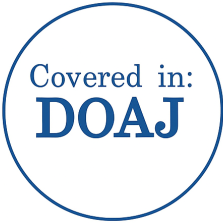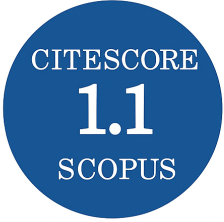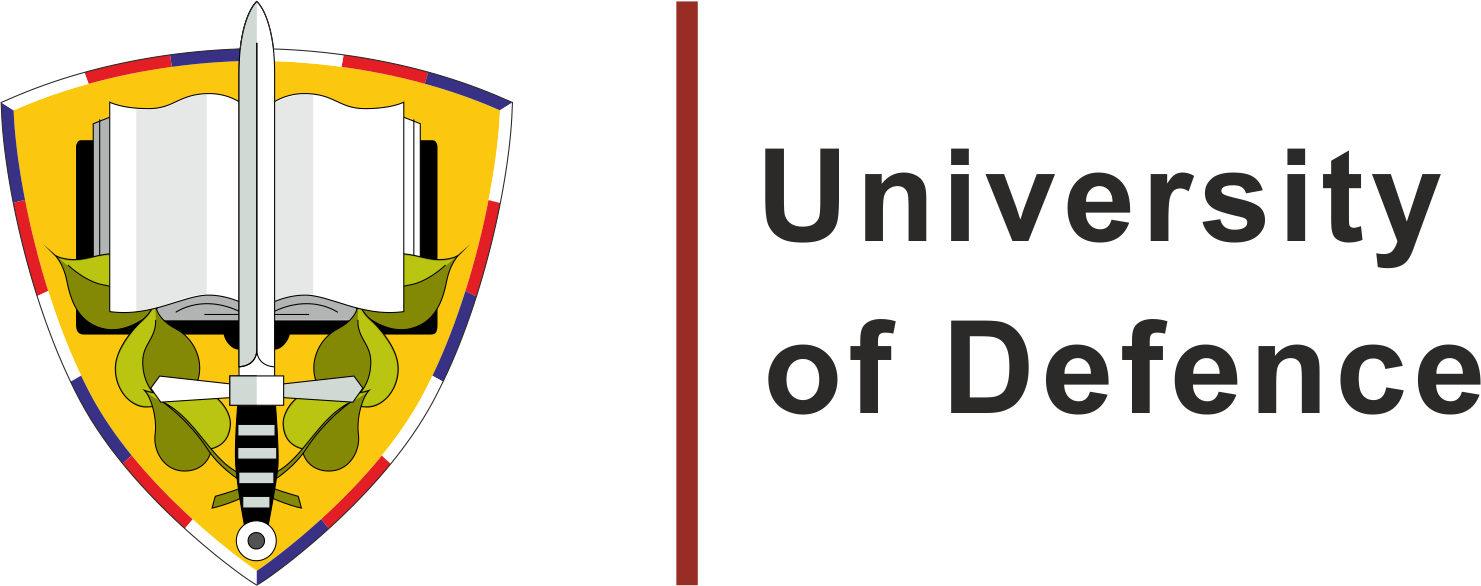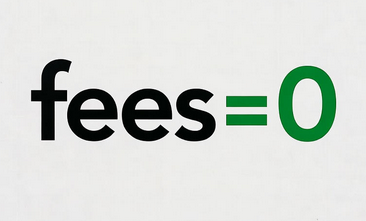Optimization of the Route Determination Process for the Purposes of Military Terrain Passability
DOI:
https://doi.org/10.3849/aimt.01865Keywords:
generalization, terrain passability, routing, microrelief, digital elevation modelAbstract
This paper presents a methodology for automated route determination in roadless terrains, optimizing it via digital elevation model (DEM) generalization, which forms the basis for route generation. Determining routes is a crucial aspect of planning and executing military or crisis management operations. The automated process employs high-resolution DEM and vehicle tractive parameters to determine routes in real-time, enabling generation of passability maps in unexplored areas. DEM generalization, based on local slope variations, expedites processing by reducing elevation points. Validated through research, this approach achieves a significant time reduction (approximately three times) while preserving route accuracy. User-adjustable parameters enhance the versatility of the algorithms for military and crisis management planning operations.
References
DOYLE, P. and M.R. BENNETT. Fields of Battle: Terrain in Military History. Dordrecht: Springer, 2002. ISBN 978-94-017-1550-8.
ROSKIN, J. The Role of Terrain and Terrain Analysis on Military Operations in the Late Twentieth to Early Twenty-First Century: A Case Study of Selected IDF Battles. In: Military Geoscience: Bridging History to Current Operations. Cham: Springer, 2020, pp. 145-160. ISBN 978-3-030-32172-7.
ATP 2-01.3. Intelligence Preparation of the Battlefield [online]. 2014 [viewed 2022-02-10]. Available from: https://www.marines.mil/portals/1/MCRP%20210B.1.pdf?ver=2018-10-04-131000-610
HEŠTERA, H. and M. PAHERNIK. Physical-Geographic Factors of Terrain Trafficability of Military Vehicles According to Western World Methodologies. Croatian Geographical Bulletin, 2018, 80(2), pp. 5-31. https://doi.org/10.21861/HGG.2018.80.02.01.
SEDLÁČEK, M. and F. DOHNAL. Possibilities of Using Geographic Products in Tasks of Military Engineering. Challenges to National Defence in Contemporary Geopolitical Situation, 2020, 2020(1), pp. 145-155. https://doi.org/10.47459/cndcgs.2020.18.
NO-06-A015:2012, Polish Ministry of National Defence, Terrain – Rules of Classification – Terrain Analysis on Operational Level. Terrain Analysis, Army Field Manual No. 5-33 [online]. 1990 [viewed 2022-02-15]. Available from: https://ia600304.us.archive.org/5/items/milmanual-fm-5-33terrain-analysis/fm_5-33_terrain_analysis.pdf
DAWID, W. and K. POKONIECZNY. Automation of the Terrain Classification Process due to Passability Taking the Microrelief Shapes into Consideration. In: 2021 International Conference on Military Technologies (ICMT). Brno: IEEE, 2021, pp. 1-8. https://doi.org/10.1109/ICMT52455.2021.9502821.
DAWID, W. and K. POKONIECZNY. Methodology of Using Terrain Passability Maps for Planning the Movement of Troops and Navigation of Unmanned Ground Vehicles. Sensors, 2021, 21(14), 4682. https://doi.org/10.3390/s21144682.
POKONIECZNY, K. Automatic Military Passability Map Generation System. In: 2017 International Conference on Military Technologies (ICMT). Brno: IEEE, 2017, pp. 285-292. https://doi.org/10.1109/MILTECHS.2017.7988771.
HOHMANN, A., G. GRANDJEAN, V. MARDHEL, G. SCHAEFER and N. DESRAMAUT. A GIS-based Vehicle Mobility Estimator for Operational Contexts. Transactions in GIS, 2013, 17(1), pp. 78-95. https://doi.org/10.1111/j.14679671.2012.01351.x.
HUBACEK, M., L. CEPLOVA, M. BRENOVA, T. MIKITA and P. ZERZAN. Analysis of Vehicle Movement Possibilities in Terrain Covered by Vegetation. In: 2015 International Conference on Military Technologies (ICMT). Brno: IEEE, 2015, pp. 1-5. https://doi.org/10.1109/MILTECHS.2015.7153730.
CAPEK, J., P. ZERZAN and K. SIMKOVA. Influence of Tree Spacing on Vehicle Manoeuvers in Forests. In: 2019 International Conference on Military Technologies (ICMT). Brno: IEEE, 2019, pp. 1-7. https://doi.org/10.1109/MILTECHS.2019.8870092.
RYBANSKY, M. Determination the Ability of Military Vehicles to Override Vegetation. Journal of Terramechanics, 2020, 91, pp. 129-138. https://doi.org/10.1016/ j.jterra.2020.06.004.
RYBANSKY, M. Determination of Forest Structure from Remote Sensing Data for Modeling the Navigation of Rescue Vehicles. Applied Sciences, 2022, 12(8), 3939. https://doi.org/10.3390/app12083939.
RYBANSKY, M., M. BRENOVA, J. CERMAK, J. VAN GENDEREN and Å. SIVERTUN. Vegetation Structure Determination Using LIDAR Data and the Forest Growth Parameters. IOP Conference Series: Earth and Environmental Science, 2016, 37, 12031. https://doi.org/10.1088/1755-1315/37/1/012031.
HUBÁČEK, M., V. KOVARIK, V. TALHOFER, M. RYBANSKY, A. HOFMANN, M. BRENOVA and L. CEPLOVA. Modelling of Geographic and Meteorological Effects on Vehicle Movement in the Open Terrain. In: Proceedings of 23rd Central European Conference. Brno: Masarykova univerzita, 2016, pp. 149-159. ISBN 978-80-210-8313-4.
RADA, J., M. RYBANSKY and F. DOHNAL. Influence of Quality of Remote Sensing Data on Vegetation Passability by Terrain Vehicles. ISPRS International Journal of Geo-Information, 2020, 9(11), 684. https://doi.org/10. 3390/ijgi9110684.
RYBANSKY, M. Soil Trafficability Analysis. In: International Conference on Military Technologies (ICMT) 2015. Brno: IEEE, 2015, pp. 1-5. https://doi.org/10.1109/MILTECHS.2015.7153728.
HUBÁČEK, M., M. RYBANSKY, K. CIBULOVA, M. BRENOVA and L. CEPLOVA. Mapping the Passability of Soils for Vehicle Movement. KVÜÕA Toim, 2016, 21, pp. 5-18.
RYBANSKY, M. and M. VALA. Relief Impact on Transport. In: 2009 International Conference on Military Technologies (ICMT). Brno: IEEE, 2009, ISBN 978-80-7231-649-6.
SUVINEN, A., M. SAARILAHTI and T. TOKOLA. Terrain Mobility Model and Determination of Optimal Off-Road Route. In: The 9th Scandinavian Research Conference on Geographical Information Science. Espoo: Helsinki University of Technology, 2003, pp. 251-259. ISBN 978-951-22-6565-7.
MCCULLOUGH, M., P. JAYAKUMAR, J. DASCH and D. GORSICH. Next Generation NATO Reference Mobility Model Development. Journal of Terramechanics, 2017, 73, pp. 49-60. https://doi.org/10.1016/j.jterra.2017.06.002.
CHOI, S., J. PARK, E. LIM and W. YU. Global Path Planning on Uneven Elevation Maps. In: 2012 9th International Conference on Ubiquitous Robots and Ambient Intelligence (URAI). Daejeon: IEEE, 2012, pp. 49-54. https://doi.org/10.1109/URAI.2012.6462928.
GANGANATH, N., C.T. CHENG and C.K. TSE. Finding Energy-Efficient Paths on Uneven Terrains. In: 2014 10th France-Japan/8th Europe-Asia Congress on Mecatronics. Tokyo: IEEE, 2014, pp. 383-388. https://doi.org/10.1109/MECATRONICS.2014.7018555.
RAJA, R., A. DUTTA and K.S. VENKATESH. New Potential Field Method for Rough Terrain Path Planning Using Genetic Algorithm for a 6-wheel Rover. Robotics and Autonomous Systems, 2015, 72, pp. 295-306. https://doi.org/10.1016/j.robot.2015.06. 002.
ZHANG, B., G. LI, Q. ZHENG, X. BAI, Y. DING and A. KHAN. Path Planning for Wheeled Mobile Robot in Partially Known Uneven Terrain. Sensors, 2022, 22(14), 5217. https://doi.org/10.3390/s22145217.
RADA, J., M. RYBANSKY and F. DOHNAL. The Impact of the Accuracy of Terrain Surface Data on the Navigation of Off-Road Vehicles. ISPRS International Journal of Geo-Information, 2021, 10(3), 106. https://doi.org/10.3390/ijgi10030106.
HU, H., J. GAO and P. HU. The Digital Generalization Principle of Digital Elevation Model. In: Proceedings of SPIE. Wuhan: SPIE, 2009, pp. 1-8. https://doi.org/10.1117/12.838546.
AI, T. and J. LI. A DEM Generalization by Minor Valley Branch Detection and Grid Filling. ISPRS Journal of Photogrammetry and Remote Sensing, 2010, 65(2), pp. 198-207. https://doi.org/10.1016/j.isprsjprs.2009.11.001.
LI, J., Y. SHEN, A. GAO, K. CHEN, Y. ZHANG and T. AI. A Heuristic DEM Generalization by Combining Catchments. Geocarto International, 2021, 37(25), pp. 9392-9407. https://doi.org/10.1080/10106049.2021.2017019.
DAWID, W. and K. POKONIECZNY. Analysis of the Possibilities of Using Different Resolution Digital Elevation Models in the Study of Microrelief on the Example of Terrain Passability. Remote Sensing, 2020, 12(24), 4146. https://doi.org/10.3390/rs12244146.
JAVAID, M.A. Understanding Dijkstra’s Algorithm. SSRN Electronic Journal, 2013. https://doi.org/10.2139/ssrn.2340905.
Downloads
Published
License
Copyright (c) 2024 Advances in Military Technology

This work is licensed under a Creative Commons Attribution-NonCommercial 4.0 International License.
Authors who publish with this journal agree to the following terms:
1. Authors retain copyright and grant the journal right of first publication with the work simultaneously licensed under a Creative Commons Attribution License that allows others to share the work with an acknowledgement of the work's authorship and initial publication in this journal.
2. Authors are able to enter into separate, additional contractual arrangements for the non-exclusive distribution of the journal's published version of the work (e.g., post it to an institutional repository or publish it in a book), with an acknowledgement of its initial publication in this journal.
3. Authors are permitted and encouraged to post their work online (e.g., in institutional repositories or on their website) prior to and during the submission process, as it can lead to productive exchanges, as well as earlier and greater citation of published work.
Users can use, reuse and build upon the material published in the journal for any purpose, even commercially.






